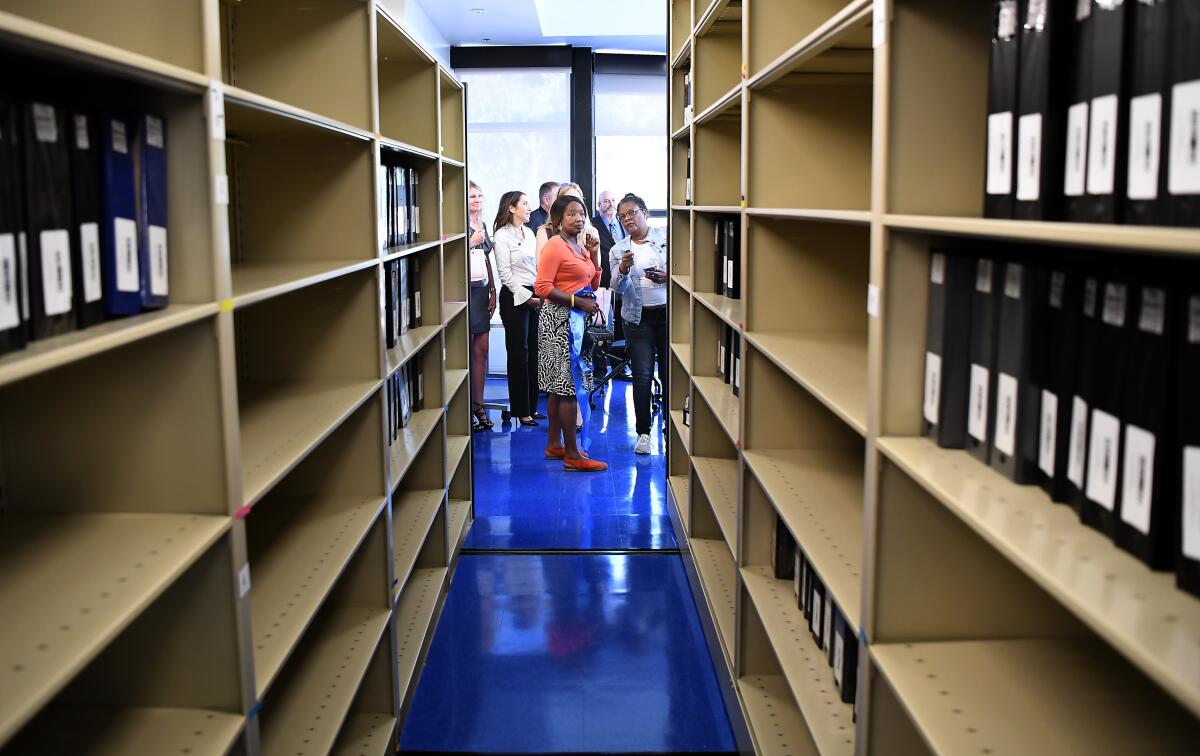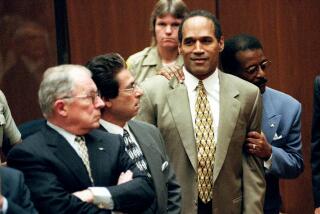Joint FBI and LAPD homicide library brings new hope for old cases

Alfred Baylor was standing in front of an apartment building near West 110th and South Main streets in 2004 when shots were fired.
Baylor, 19, and two others were wounded, according to coroner’s records. Baylor eventually died at a hospital.
There were multiple arrests, but charges were never filed.
Now, the lessons gleaned in successful prosecutions and in long-dormant cases such as Baylor’s will be accessible to Los Angeles Police Department homicide investigators at a new digital library that will store case files that cops call “murder books.”
After a years-long effort, the joint LAPD/FBI Homicide Library opened Wednesday with 5,000 solved and unsolved homicide files, which include crime scene photos, pictures of witnesses, medical reports, notes scrawled on yellowing paper, tips and other evidence.
The physical books — thick, three-ring binders — are also being stored at the new facility, a 7,300-square-foot space at the Ahmanson Recruit Training Center in Westchester. Eventually, the LAPD will be able to store 15,000 cases going back to 1960.
In addition, researchers are studying more than 4,500 of the digitized murder books to identify why investigators were and weren’t successful in solving cases.
Officials said the technology will save time and resources for detectives who might otherwise have spent weeks tracking down materials from cold case archives. The library is also intended to be a repository for victims’ families.
“It also will allow us to have a centralized location so that when families call or when survivors call asking about the status of their case, we can quickly respond to that,” LAPD Chief Michel Moore said at a news conference Wednesday at the library.
Moore said that families with questions about a case will be able to speak with an investigator in a room in the library set aside for them. The library cost more than $1 million and was primarily funded through donations.
The effort began in 2012, when the department’s South Bureau, along with the FBI, began organizing and digitizing murder books. Quickly, investigators realized the potential.
“The hopes of this is that ... it will continue to enliven, and keep these cases fresh and new,” Moore said.
Investigators from the LAPD’s South Bureau have already used the library to look up old cases and make connections with new ones.
“It’s striking when the iron’s hot is really what it comes down to,” said LAPD Det. Mark Hahn, who heads up the unsolved squad in the bureau.
LAPD officials hope that when the database is complete, investigators will be able to search different aspects of a murder book including gang monikers and names of suspects to link cases.
Paul Delacourt, the assistant director in charge of the FBI’s Los Angeles office, said that such advances help solve more crimes and allow law enforcement to increase productivity by being able to quickly access evidence from a case.
“Perhaps most importantly, the new library allows investigators to treat each case with the respect and dignity that the victims and their families deserve,” Delacourt said.
LaWanda Hawkins, the founder of Justice for Murdered Children, said the new library is a great advance for cases that haven’t been solved.
The topic is close to her heart. Her 19-year-old son Reginald was killed in 1995 in San Pedro.
“This is a blessing, it changes everything,” she said.
Alfred Baylor was laid back and liked to play the drums, his brother Allan Baylor said. Baylor said the killing changed his family forever. He said he hopes for justice someday.
“You can never get that out of your head,” he said.
More to Read
Start your day right
Sign up for Essential California for news, features and recommendations from the L.A. Times and beyond in your inbox six days a week.
You may occasionally receive promotional content from the Los Angeles Times.







